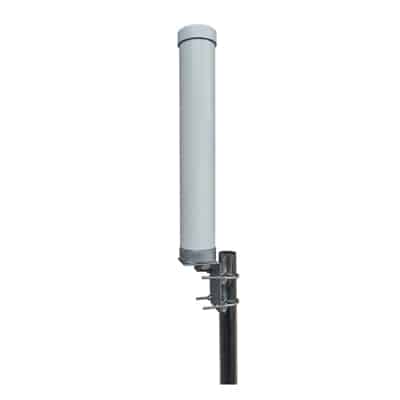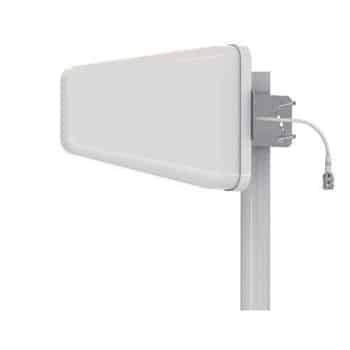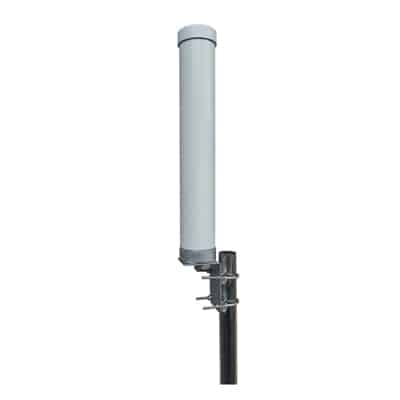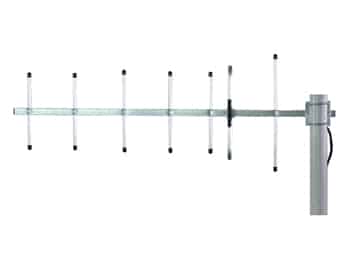Знаете ли вы, что в 2024 году число пользователей интернета во всем мире составит 5,44 миллиарда человек? Это означает, что около двух третей населения планеты ежедневно выходят в интернет. В современном быстро меняющемся мире наличие надежной связи и доступа в Интернет стало крайне важным как для личной, так и для профессиональной деятельности. Различные беспроводные технологии революционизировали способы взаимодействия, навигации и взаимодействия людей и предприятий в цифровом ландшафте. 4G LTE (Long Term Evolution) и WiFi - две такие технологии, наиболее широко используемые во всем мире. И 4G LTE, и WiFi сыграли важную роль в обеспечении значительного уровня эффективности, удобства и безопасности в личных и деловых пространствах. Обе эти технологии имеют свой набор преимуществ и ограничений, что делает их подходящими для разных случаев использования.
В этой статье мы рассмотрим ключевые особенности 4G LTE и WiFi и сравним их производительность с точки зрения таких факторов, как скорость, покрытие, надежность, стоимость и безопасность. В статье также будет представлен обзор идеальных областей применения каждой технологии, чтобы помочь пользователям определить и принять взвешенное решение о том, какую технологию использовать для конкретных случаев.
Оглавление
ToggleЧто такое 4G LTE?
4G LTE - это стандарт беспроводной широкополосной связи четвертого поколения мобильных сетей. Ключевым отличием 4G LTE от его предшественников, таких как 3G и WiMAX, является использование радиоволн вместо микроволн. Это позволяет 4G LTE иметь лучшее проникновение, покрытие и дальность действия. За разработку стандартов для этой высокоскоростной беспроводной технологии отвечает проект 3rd Generation Partnership Project (3GPP). 4G LTE рассчитана на низкую задержку и высокую пропускную способность, которая может достигать 100 Мбит/с по нисходящему каналу и до 50 Мбит/с по восходящему каналу. Высокая пропускная способность делает ее подходящей для приложений, требующих быстрого доступа к контенту, таких как видеоприложения, а низкая задержка делает ее идеальной для чувствительных ко времени приложений, таких как голосовые услуги или приложения IoT.
4G LTE имеет полностью IP-плоскую сетевую структуру, что позволяет использовать ее в новых конвергентных услугах на базе IP Multimedia Subsystem (IMS). Обратная совместимость технологии 4G LTE обеспечивает большую гибкость и удобство для пользователей. Архитектура 4G является модульной и масштабируемой, поэтому сеть может быть легко расширена для удовлетворения более высоких потребностей. Даже с учетом эволюции технологии в 5G и далее, 4G LTE по-прежнему остается силой, с которой нужно считаться среди используемых сегодня технологий сотовой связи.
Что такое WiFi?
Wireless Fidelity, commonly известный как WiFi, - это технология, которая передает информацию между физическими интернет-устройствами, такими как маршрутизаторы, коммутаторы или ретрансляторы, и конечными пользователями, такими как мобильные телефоны, компьютеры и IoT-устройства, по радиочастотным каналам без какой-либо проводной инфраструктуры. Благодаря своей простоте, сети Wi-Fi сегодня доступны в большинстве общественных мест, таких как офисы, аэропорты, гостиницы, кофейни и библиотеки, помимо домашних сетей WiFi.
Сети WiFi обычно работают в диапазонах частот 2,4 GHz, 5 GHz и 6 GHz, и, как правило, чем выше частота, тем выше скорость соединения. Наиболее часто используемые протоколы WiFi включают 802.11a, 802.11b, 802.11g, 802.11n и 802.11ac, которые стандартизированы IEEE. Каждый из них обладает уникальными диапазонами рабочих частот, максимальной скоростью передачи данных и методами модуляции.
Существует четыре основных типа сетей WiFi в зависимости от зоны покрытия сети. WLAN (Local Area Network), которая commonly используется в commercial и жилых приложениях или в случаях использования с небольшими зонами покрытия. MAN (Metropolitan Area Network), которая используется для приложений, требующих более обширного покрытия, например, для университетов или части города. PAN (Personal Area Network), которая используется для приложений, требующих подключения минимального количества устройств в очень маленькой зоне покрытия, например в одной комнате. WAN (Wide Area Network), которая используется для широких зон покрытия, например, всего региона, штата или страны.
В таблице ниже представлен краткий обзор ключевых особенностей и различий между 4G LTE и WiFi, которые будут рассмотрены более подробно далее в этой статье.
| Коэффициент сравнения | LTE (сотовая сеть) | Сеть Wi-Fi |
|---|---|---|
| Покрытие | Широкое покрытие, включая удаленные и подземные районы | Ограниченный радиус действия, в основном для локального подключения |
| Мобильность | Оптимизировано для мобильных устройств с бесшовным роумингом | Лучше всего подходит для стационарного использования, при ограниченной подвижности |
| Скорость передачи данных | Высокоскоростные данные, идеальные для приложений, чувствительных к задержкам | Быстрый, но в определенных условиях может отставать от LTE |
| Потребляемая мощность | Высокое энергопотребление, может сократить срок службы батареи | Более энергоэффективные, более долговечные устройства |
| Инфраструктура | Полагается на вышки сотовой связи и сети операторов. | Требуются маршрутизаторы или точки доступа |
| Безопасность | Сильная встроенная защита (аутентификация и шифрование) | Безопасность зависит от шифрования (например, WPA3) и установки пароля |
| Масштаб развертывания | Подходит для крупномасштабного развертывания на уровне оператора связи | Предназначен для небольших установок (дома, в офисе) |
| Стоимость | Часто требуются абонентские планы (ежемесячная плата за данные) | Более низкие первоначальные затраты (единовременные инвестиции в оборудование) |
| Устойчивость к помехам | Хорошо работает в местах большого скопления людей с минимальными помехами | Подвержены помехам в условиях высокой плотности окружающей среды |
| Поддержка устройств | Совместимость со смартфонами, устройствами IoT и мобильным оборудованием | Работает с устройствами с поддержкой Wi-Fi (ноутбуками, устройствами "умного дома" и т.д.). |
Сравнение скоростей: 4G LTE против Wi-Fi
Если говорить о скорости, то и 4G LTE, и WiFi - это скачок вперед по сравнению с предыдущими поколениями технологий communication.
4G LTE обеспечивает скорость до 100 Мбит/с при загрузке. Однако в практических сценариях 4G LTE обычно имеет скорость загрузки в диапазоне 9-60 Мбит/с. Скорость загрузки в 4G LTE обычно составляет от 1 до 30 Мбит/с.
WiFi обеспечивает значительно более высокую скорость передачи данных. Скорость сети WiFi зависит от стандарта. WiFi в частотном диапазоне 5 GHz может предложить максимальную теоретическую скорость 6,9 Гбит/с, но в практических сценариях скорость обычно колеблется между 100-300 Мбит/с, в зависимости от таких факторов, как качество маршрутизатора и перегруженность сети. WiFi 6 и WiFi 6E могут предложить скорость до 9,6 Гбит/с. Фактическая достижимая скорость для сети, будь то 4G LTE или WiFi, зависит от различных факторов, таких как расстояние до точки доступа или вышки сотовой связи, помехи сигнала и возможности подключенных устройств. Бывают ситуации, когда соединения 4G LTE могут обеспечить более высокую и надежную скорость по сравнению с Wi-Fi.
Если рассматривать реальные приложения, то для потокового вещания высокой четкости WiFi обеспечивает более плавную работу благодаря высокой пропускной способности и таким функциям, как MIMO. Для таких приложений, как игры, где требуется связь в реальном времени с минимальной задержкой, WiFi - лучший вариант. Однако для приложений, требующих не столько максимальной скорости, сколько широкого покрытия и надежности, лучшим вариантом будет 4G LTE.
Охват и мобильность
Если рассматривать покрытие и мобильность, то 4G LTE значительно лучше, поскольку обеспечивает широкое покрытие сети. Покрытие 4G LTE, как правило, является общенациональным для всех абонентов, в то время как у WiFi оно ограничено сравнительно небольшой территорией. Поскольку доступ к 4G LTE осуществляется через мобильное устройство, при условии, что провайдер сотовой связи покрывает территорию, пользователи могут удобно выходить в интернет независимо от того, где они находятся - дома или в пути.
WiFi, как правило, является локальной сетью, и, следовательно, зона покрытия очень ограничена. Покрытие WiFi обычно обеспечивается тремя основными способами: прямым покрытием точки доступа (AP) внутри помещения, покрытием комбинированной дорожной распределительной системы внутри помещения и прямым покрытием точки доступа вне помещения. Как только пользовательское устройство покидает зону покрытия точки доступа, сигнал значительно ухудшается. Как правило, зона покрытия WiFi составляет около 300 футов от точки доступа. С точки зрения мобильности, 4G LTE лучше, так как они специально разработаны для мобильных устройств и поддерживают бесшовный роуминг. WiFi обладает ограниченной мобильностью и подходит в основном для устройств, которые будут находиться в пределах короткой зоны от точки доступа. Однако если пользовательское устройство находится в зоне действия сети WiFi, можно обеспечить плавный и бесперебойный просмотр веб-страниц.
Латентность и надежность
И 4G LTE, и WiFi впечатляют снижением задержек. Задержки в 4G LTE обычно составляют от 20 до 50 миллисекунд. Однако эта задержка зависит от источника передачи данных, места назначения передачи данных, помех между ними и трафика в сети. Производительность устройства, подключенного к 4G LTE, может значительно снизиться в перегруженных сетях, поскольку повышенная нагрузка на вышки сотовой связи может привести к задержкам и обрыву соединения. Сети WiFi обычно имеют более низкий уровень задержки при оптимальных условиях. Однако с учетом таких факторов, как физические барьеры, помехи от соседних сетей и качество маршрутизатора, задержка в сети WiFi может значительно измениться.
Современные сети WiFi, созданные с использованием таких технологий, как MIMO, OFDMA и beamforming, повысили общую эффективность сети и, следовательно, обеспечивают низкие задержки даже в условиях большого скопления людей. В целом, в контролируемой среде, где устройства находятся в непосредственной близости от сетевых устройств, WiFi обеспечивает более стабильное и надежное соединение с минимальными задержками, чем 4G LTE. Поэтому в таких местах, как офисные здания или дома, лучше использовать WiFi.
Надежность сетей 4G LTE зависит от инфраструктуры сотовой сети. Однако в хорошо покрытой зоне 4G LTE можно использовать даже в критически важных приложениях реального времени.
Стоимость и доступность
4G LTE предоставляется операторами мобильной связи, и расходы, связанные с ним, зависят от планов передачи данных. Планы передачи данных 4G LTE могут влечь за собой дополнительные расходы в зависимости от их использования, особенно если речь идет о планах с ограниченным объемом данных. Однако для удобства пользователей существуют как предоплаченные, так и постоплатные варианты. Что касается стоимости, то WiFi в основном требует предварительных затрат на установку необходимой сетевой инфраструктуры. Стоимость WiFi обычно включает в себя стоимость услуг широкополосной фиксированной линии и первоначальные инвестиции в маршрутизатор. Эти расходы могут варьироваться в зависимости от поставщика услуг Интернета (ISP). WiFi, как правило, является лучшим вариантом для приложений, которые интенсивно используют Интернет. Как правило, для домов и офисов решения WiFi являются экономически эффективными.
Учитывая доступность, 4G LTE доступен везде, где есть покрытие сотовой связи 4G LTE. Для приложений или пользователей, которым необходим доступ к интернету из разных мест, 4G LTE будет лучшим вариантом. 4G LTE - это доступный вариант для районов, где проводная инфраструктура WiFi невозможна. Таким образом, 4G LTE является более универсальным решением с точки зрения доступности. WiFi требует стационарного широкополосного подключения и обычно доступен в зоне действия сетевой инфраструктуры. WiFi доступен и удобен для использования в домах, на предприятиях и в общественных местах, таких как кафе, аэропорты и библиотеки.
Безопасность и конфиденциальность
Хотя ни одна сеть не является на 100 процентов безопасной, сети 4G LTE обычно считаются более безопасными, чем WiFi. Для безопасной передачи данных в них используются протоколы шифрования, защищающие от подслушивания и перехвата. Кроме того, их обновлениями и задачами системного уровня управляют сами операторы мобильной связи, а значит, защита обеспечивается на всей территории сети. Поскольку даже незначительная проблема, касающаяся конфиденциальности и безопасности пользователей, может привести к потере репутации и бизнеса и даже к значительным финансовым потерям, операторы сетей 4G LTE поддерживают высокие стандарты безопасности.
Хотя в сетях WiFi для безопасной передачи данных используются такие протоколы шифрования, как WPA3 и WPA2, уровень безопасности может зависеть от нескольких факторов, таких как настройки пользователя, надежность используемых паролей, частота обновления прошивки маршрутизатора и т. д. Таким образом, безопасность и конфиденциальность сети WiFi в значительной степени зависит от пользователя. Еще одним фактором, влияющим на уязвимость пользователей WiFi, является наличие поддельных сетей WiFi, к которым пользователи могут подключаться, не зная об этом. Это позволит получить доступ к просмотру веб-страниц. Особенно это касается публичных сетей WiFi, которые часто небезопасны и подвержены таким действиям, как перехват трафика.
В 4G LTE используется авторизация на основе токенов (SIM-карт), что в целом безопасно. Однако при клонировании SIM-карты даже 4G LTE может быть подвержен подделке сети. Для повышения безопасности и конфиденциальности рекомендуется использовать такие методы, как виртуальные частные сети (VPN), надежные пароли, а также поддерживать в актуальном состоянии прошивку и программное обеспечение.
Примеры использования: Когда стоит выбирать 4G LTE против Wi-Fi
Выбор между 4G LTE и WiFi полностью зависит от требований приложения. 4G LTE идеально подходит для приложений, требующих подключения в пути. Как уже говорилось, пользователи могут выходить в интернет из любого места, где есть покрытие сети 4G LTE. Таким образом, пользователи могут оставаться на связи независимо от местоположения, если этот регион покрывается провайдерами сотовой связи. 4G LTE также полезен в регионах, где стационарная широкополосная инфраструктура не позволяет получить высокоскоростной доступ в Интернет. 4G LTE также можно использовать в качестве резервного решения в тех случаях, когда широкополосные соединения WiFi не работают, чтобы обеспечить бесперебойное подключение.
Wi-Fi идеально подходит для приложений, которые используются на ограниченной территории, например, в домах и офисах. В зоне действия точек доступа WiFi способен обеспечить высокоскоростное и стабильное интернет-соединение. WiFi также используется для подключения интеллектуальных и IoT-устройств в домах и офисах. WiFi чрезвычайно эффективен для приложений, требующих больших объемов данных, таких как потоковое вещание, игры и загрузка данных. WiFi способен одновременно обслуживать большое количество пользователей. Поэтому сети WiFi идеально подходят для мест, где требуется одновременное подключение нескольких устройств, например, в домах и на рабочих местах.
Некоторые современные решения требуют гибрида сетей 4G LTE и WiFi для получения максимальных преимуществ. Особенно в приложениях IoT, способность устройств автоматически переключаться между LTE и Wi-Fi в зависимости от доступности и качества сети обеспечит оптимальную производительность и надежность.
Заключение
Как уже говорилось в статье, и 4G LTE, и Wi-Fi имеют свои уникальные преимущества в плане скорости, покрытия, стабильности, безопасности и т. д. 4G LTE способен обеспечить мобильную связь в широкой зоне покрытия. Они идеально подходят для подключения в дороге и в местах, где нет возможности установить стационарную широкополосную инфраструктуру. Wi-Fi способен обеспечить высокоскоростное и стабильное соединение для приложений, которые используются в зоне действия маршрутизаторов или точек доступа WiFi. WiFi также экономически эффективен при работе с большими объемами данных. Выбор между 4G LTE и WiFi полностью зависит от сферы применения. При принятии решения пользователям необходимо учитывать такие факторы, как мобильность, зона покрытия, безопасность, стоимость и т. д. Правильное понимание ключевых особенностей, отличительных факторов и уникальных преимуществ каждой технологии позволит пользователям принять обоснованное решение об использовании 4G LTE или WiFi для наилучшего удовлетворения требований конкретного случая использования.







